Senior Pets for Senior People
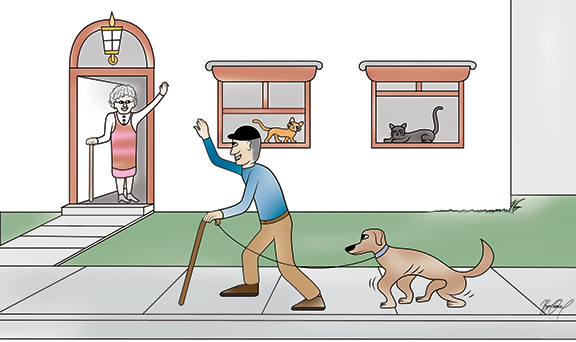
By Kathryn R. Burke. [Montrose Daily Press, January 20, 2019] I am a senior and I have a senior cat. She is my roomie, my dinner companion, my BFF. She’s waiting at the window when I drive up to the house and is my enthusiastic ‘greeter’ when I walk in the door. And, she watches, with slumped shoulders and sad eyes, when I leave. She lies on my lap, purring, as we sit by the fire on a cold night or lounge on the couch watching movies. She sleeps next to me and keeps me company in my office. We play ‘hide and seek’ (albeit more slowly now, since we both have arthritis). She graces my FB and Instagram pages, and everybody who knows me, knows her, and always asks, “How is KitKat doing?”
Like for many of my senior friends, having a furry friend provides wonderful companionship. Yet, some who long for a pet may be afraid to get one lest they outlive it. That’s where fostering or adopting offers a perfect solution. You can age together. Senior canines and cats share calm camaraderie with us—a blessed gift as we age. They offer unconditional love and alleviate loneliness. Seniors become increasingly isolated from family, busy with their own lives, and friends, suffering from loss of mobility and slowly dying off. Adoptable senior pets have often lost family, too, and are lonely and need love just as much as we do.
Why pair a senior human with a senior pet? One main reason is energy levels. We’re not as zippy as we once were, and they aren’t either. Puppies and kittens are so cuddly and fun—and so busy! All that non-stop, wiggly energy. Trying to keep up with it is exhausting. And often destructive if you don’t.
Older pets have outgrown the need to chew up your underwear, pee on the bedspread, climb the curtains, or poop in the middle of the kitchen floor. They are already trained. They can still learn new tricks and routines, but with a greater attention span than a rambunctious puppy or kitten.
Senior pets are less likely to get underfoot, cause falls, or tear tender skin, a curse of the elderly. They tend to be mellow. Accustomed to being around people, they are less likely to hide or run off, and (usually) come when called. Their personalities are already established, so you know if you’re a match before you adopt one.
Spending time with your pet helps improve mental and physical health. Benefits include lower stress levels and blood pressure, reduced depression, and improved exercise—for you both. Pets open opportunities for interacting with others—take the dog for a neighborhood walk, and many people will stop to ask you about it. Post pictures on your FB page, like I do, and start conversations with other pet owners and make new friends.
For seniors not living at home, many residence facilities encourage pet ownership. Nursing homes allow pet visits. Facilities often have their own resident cat or dog companions. Some, including the hospital, host service animal visitations.
If you want to become a senior pet companion, where do you start? Senior Pets for Senior People FB page is dedicated to matching people who want to adopt or foster a senior pet. They also help to match shelters with rescue organizations. Many rescues have medical funding and just need a safe haven for these pets to live out their lives with love and compassion. Check in with Petfinder.com and search (by zipcode) for pets near you available for adoption.
Second Chance Animal Shelter in Ridgway has a robust re-homing program for lost or abandoned pets. Like Montrose Animal Shelter and Waggin’ Tails Delta Humane Society, they have fee-based adoption programs that include spaying and neutering. Local vets know of pets needing to be re-homed and can help match pet to person, finding ‘forever homes’ that suit both.
Senior pets for senior people—compassionate companionship that benefits both.
Kathryn R. Burke also writes and speaks on caregiving. More here, http://caregiver-journey.com/
Senior pet resources, SW Colorado
• https://www.facebook.com/SeniorPetsForSeniorPeople/
• https://www.petfinder.com
• https://www.facebook.com/Montrose-Animal-Shelter-254061984637107/
• https://adoptmountainpets.org/
• http://www.deltacountyhumanesociety.org/
• http://www.surfacecreekshelter.org/

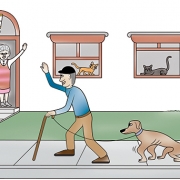
 © Kathryn R. Burke
© Kathryn R. Burke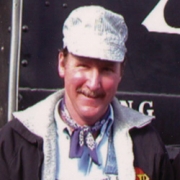 © Bill Colley
© Bill Colley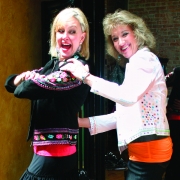 © Kathryn R. Burke
© Kathryn R. Burke © Kathryn R. Burke
© Kathryn R. Burke © Kathryn R. Burke
© Kathryn R. Burke © Kathryn R. Burke
© Kathryn R. Burke © Kathryn R. Burke
© Kathryn R. Burke [Montrose Economic Development Corporation, 50th Anniversary Publication]
[Montrose Economic Development Corporation, 50th Anniversary Publication]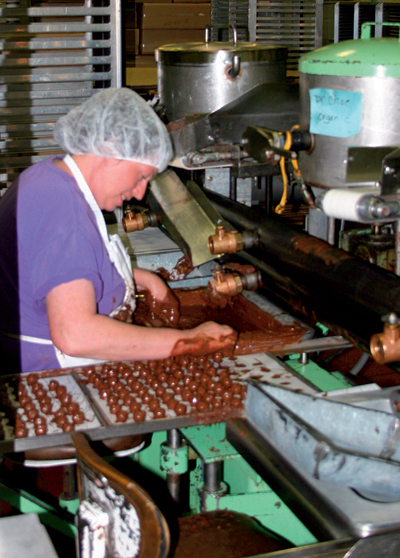
 And all this from the Eskimo Pie (invented by Russell Stover’s business partner in 1921) and Clara Stover’s “Bungalo Candies,” first produced in 1923 in Denver when the Stovers became a privately held candy manufacturer. Today, run by the Ward family, who acquired it in 1960 and now also own Whitman’s and Pangburn’s, Russell Stover produces a variety of products including Weight Watcher, Net Carb, sugar-free candies, and their long-standing favorite, boxed chocolates. The company is the nation’s leading manufacturer of boxed chocolates.
And all this from the Eskimo Pie (invented by Russell Stover’s business partner in 1921) and Clara Stover’s “Bungalo Candies,” first produced in 1923 in Denver when the Stovers became a privately held candy manufacturer. Today, run by the Ward family, who acquired it in 1960 and now also own Whitman’s and Pangburn’s, Russell Stover produces a variety of products including Weight Watcher, Net Carb, sugar-free candies, and their long-standing favorite, boxed chocolates. The company is the nation’s leading manufacturer of boxed chocolates.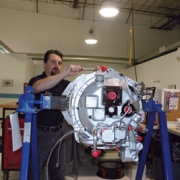 © Kathryn R. Burke
© Kathryn R. Burke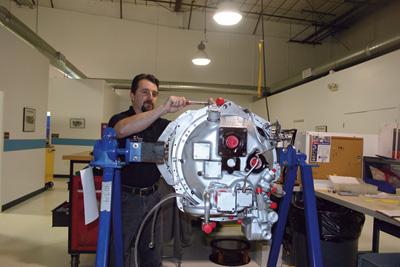 [50th Anniversary Publication] In 1993, Al Head, and David Leis came together along with two additional partners to create a piston aircraft engine shop—Western Skyways. The company’s first location was in the Stryker Industrial Park on North Townsend, not a likely place for an aviation business. It wasn’t long before they outgrew their 4,000 square foot facility.
[50th Anniversary Publication] In 1993, Al Head, and David Leis came together along with two additional partners to create a piston aircraft engine shop—Western Skyways. The company’s first location was in the Stryker Industrial Park on North Townsend, not a likely place for an aviation business. It wasn’t long before they outgrew their 4,000 square foot facility.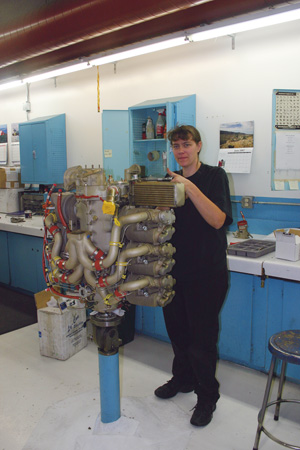 Western Skyways, which employs 79 people, continues to grow, with a piston engine shop at their main location and a turbine engine shop in space rented from JetAway Aviation in an adjacent building.
Western Skyways, which employs 79 people, continues to grow, with a piston engine shop at their main location and a turbine engine shop in space rented from JetAway Aviation in an adjacent building. © Kathryn R. Burke
© Kathryn R. Burke